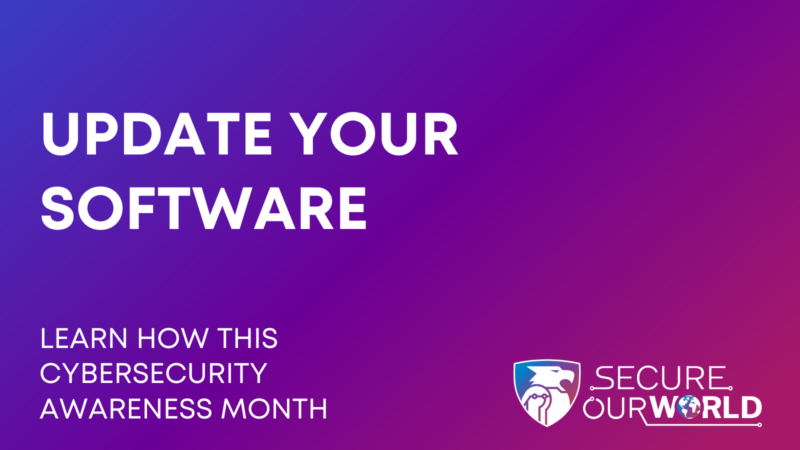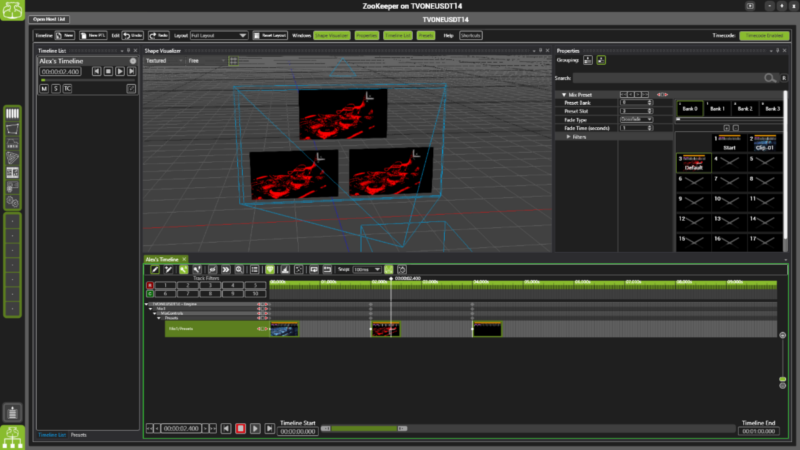Selling Soft Serve(ices)- Hurdle One: Business Models
Earlier this week I posted The Hard Truth about Soft Serve(ices). (Feel free to read that first if you missed it.) However, in summary, I asserted that the hurdles we face as an industry today regarding selling software, services, and IT-centric AV may be less technical and more business related.
My thought is that revenue models, sales compensation plans, and liability concerns are hindering the growth of these categories, despite the end users’ apparent receptivity to them.
I do a lot of events every year, whether for the manufacturer I work for, one of the publications I write for, or for one of the associations I belong to. Given the conversations I have had regarding the future of AV products and services in corporate, education, and entertainment environments, there is a real desire out there to minimize hardware and infrastructure, reduce hardware investments, and engage in relationships that allow for more of a consumption based model of paying for AV resources.
They also want personalized and consistent user interfaces, ways to manage upgrades more efficiently, flexible feature sets, universal access for control and management, and data analytics for long-term resource planning and demonstrated ROI.
That is the promise of software, managed services, and network-centric distribution and control.
The economic opportunity for integrators lies in the reality that these systems allow for platforming, increasing the total addressable scope of work with their clients, turning them into a strategic partner for years to come, as opposed to fighting a one-off, project-based bid war every time the client builds a new room.
It would be dishonest of me to say that no one has turned the corner on at least one of these three opportunities.
There are quite a few integrators focusing on managed services. There are a handful of integrators focusing on a software-driven approach to control and monitoring of their systems in order to provide these managed services, as well as provide valuable data on the systems back to their customers. There are also a few integrators embracing the level 3 network switch. Most of those are doing it for audio on platforms like Dante and Q-Sys, and a smaller percentage are starting to use it to provision their clients’ video networks as well.
A large part of the industry, however, is still waiting. So in the spirit of not bringing up problems without offering viable solutions, here are a few thoughts on how companies that have traditionally relied on large hardware sales and high margins to be profitable may be able to turn the corner.

Hurdle One- Profit Models
The biggest problem I see for many integrators that may want to make the transition from a hardware sale to a software subscription service is the upfront impact on revenue. In the control space for example, a single processor for a room may have an MSRP of $1500, netting $500-$750 in margin. A software subscription for control software may have an MSRP of $300 per year, netting $100. If the room is refreshed every 5 years, the customer makes a similar investment and the integrator makes the same profit, but the delayed revenue can make or break an integrator’s willingness and/or ability to sell the software-based solution.
The hard truth is that end-user demand may force integrators to offer these solutions at some point in the near future, and their business models need to be in-line for that transition.
Invest in a system to assure proper job costing.
Fact: Many integrators don’t know how much it actually costs them to complete a project.
Sure, they know the cost of materials and the estimated labor, but it typically falls off the tracks after that. Return trips to the office, missing equipment, additional or expedited shipping fees, return trips for multiple punch lists, the cost of administration, procurement, project meetings, etc rarely make it into the final analysis.
For these integrators, success is having money left over after payroll and invoices are all paid.
Cash FLOW is king in small integration companies.
Profit margins on high dollar equipment absorb the impact of poor job costing methods and disguise the fact that the business is unprofitable from a labor perspective. A hard cutover to a subscription-based model removes that buffer and endangers the business. That is unless the integrator implements a methodology to track their profitability from a labor and resources perspective and bid jobs utilizing this information. If the business creates a pipeline of work that supports the day to day business costs with the revenues collected from labor and services, then any additional profits from minimal hardware sales and software subscription services are just gravy.
The takeaway here? In a world of increasing commoditization, exponential competition, online pricing transparency, and decreasing margins, service IS your value proposition.
If you aren’t profitable from a labor and services perspective, your business WILL die.
Recurring Monthly Revenues (RMR), or mailbox money as some call it, is at the heart of a successful business. The more money that comes in every month without having to acquire a new client or be awarded a new project adds security to the business. Subscription-based services and managed services are the easiest way to build RMR. The goal obviously for any business, is to have enough consistent revenue every month to cover the operating costs and payroll of the business. If that pipeline is sufficient, then even a few bad months don’t kill the business. They would just delay its growth.
RMR is the long game.
Attachment rate is the first thing to focus on. Subscription and managed services should be added to every single job they are applicable to. They should be on every bid as a default. The client will either purchase them, or ask why they are necessary, opening the door for a conversation around why they should keep them in the scope of work.
Winning a project based on hardware and labor, and then asking for managed services later seems like an additional expense from the client’s perspective. It may be too late to get the additional budget required and/or the client may see it as an attempt to inflate revenues and not even give you the chance to explain the value.
High-end automobile companies include services in the purchase price, they’re included. They realized that wrapping the cost into the price didn’t cost them customers and was a much better method than trying to sell them as an add-on to the car during the meeting with the finance manager.
But attachment rate isn’t everything. You also need to differentiate.
There is definitely a ceiling on the amount an integrator can charge to check light bulbs and filters on projectors every month. However, that amount increases exponentially if the integrator can also provide business intelligence to their customer. Subscription services should include data that the customer is interested in collecting. Room occupancy, equipment utilization by room, the status of equipment, etc are all key to planning future resources and even to improving workflows and employee productivity. It’s worth more to them than a tech on a ladder checking lamp hours.
To offer this type of data, integrators have to embrace the network, IP devices, software, and a managed service business model.
Differentiating by offering software-based systems that collect business intelligence from connected devices and then presenting it in a way that is relevant to the client stakeholders will increase not only managed services sales to existing clients but will also allow the integrator to win more business over time as well.
You don’t build a partnership by filling out an RFP spreadsheet. You do that by having real business conversations, and in today’s world, data is a very easy way to start that conversation.
If you want to look at a business that is complementary to AV and has made the switch from a hardware-based sale to a service based sale, look no further than the residential security industry.
Security Sales
Security systems are given away for free, usually including 3 contacts, a motion detector, a keypad, and the security panel. Even the installation is free. The equipment listed above costs the company installing the system somewhere between $200 and $250, and paying the technician to do the installation adds another $100 to $150 in hard costs. However, the contracts are $30-$40 per month for a 3-year term, and the hard cost of monitoring a system through a third party monitoring service is $5 to $8 per month. The end result is a system in which security companies make an initial investment in every installation, breaking even after about 14 months and then realizing a profit for the remaining 22 months of the contracted term. To go a step deeper, the contracts auto-renew for 12 months if not canceled a month from the expiration date. Based on the way these renewals work, the average life of a security contract is about 7 years.
This model didn’t just come about automatically. Companies had to make an investment in the new methodology for the first 14 months of each new system, but the rewards were tremendous. I remember competing with a residential integrator that was backed by a large security firm from PA. At that time, the company had 75,000 active monitoring contracts. Even at only $30 a month, that was $2,250,000 in RMR every month. Needless to say, that type of monthly revenue gave them deeper pockets to go and acquire more customers as well.
Their early investment in a new and innovative business model gave them an advantage in acquiring new customers that turned into a revenue stream that helped maintain that position even after others adopted the same model.
It all started with someone saying,
“We have to make a short-term investment in our business’s future.”
Given all this, what advice does it give integrators wanting to make the switch to a new services friendly business model?
Determine your true costs of doing work through proper job costing methodologies.
Create a service revenue pipeline that covers base operational costs and payroll.
Add managed services contracts and software-based system management and data analytics to every bid as a standard procedure.
Differentiate yourself with potential clients by talking about their business and the long-term value of your managed systems and services as opposed to the number of years you’ve been in business and rattling off your top 10 hardware partners.
Continue to invest as the revenue streams change from hardware sales to subscriptions and soft services, expanding the portfolio to include adding more services like AV over IP to replace hardware-based legacy systems.
Next week I’ll dig into Hurdle #2- Sales Compensation, but for now, I’d love to hear YOUR ideas on business models that may be friendlier to soft services as well.
Please leave them in the comments below.





